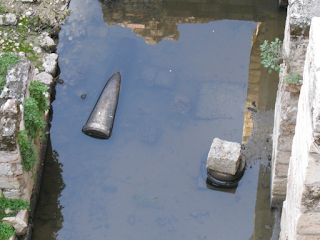Ashley sent me a message about a button and wondered if I might use it on the blog.
The answer was 'Yes, definitely!' So here it is.
Read it first, then I'll comment on it, and finally you can comment too if you wish.
I hope we do have a conversation in the comments. It could be rather useful.
Put on your thinking-cap and start stroking that keyboard or tablet.
Secure in Jesus...
I belong to a small home group which meets on a weekly basis. This week we met as usual and we were encouraged to discuss, and then try sitting quietly and listening to God. As the group compromises of Christians young and mature, we shared how to go about getting to listening and hearing.
It is something I have learnt to do and had some good experiences from over the years. God talks to me via pictures a lot and also through other people. Today when I was preparing my spirit for my quiet time God quickly gave me a picture of a button. I sat in his presence for not very long when I had back that the significance of this picture was about being secure.
A pair of trousers, like life is no good unless they are secure. Trousers with no button could have you holding them up manually, maybe with one hand so you are not as effective as you could be in what you do on a daily basis with two hands. If you stopped trying to hold them up, they would fall down around your ankles and could cause you to fall over them. Life holds no security for us as anything is temporary. We are all at anytime able to lose a job or a loved one for example. Total security is only available in a relationship with Jesus.
Everybody at some stage in life will wear trousers and want them to be secure, just like at some stage in life we will want Jesus to help us to be secure. Jesus does not want this at some stage approach. He wants us to be in a lifelong relationship with him, trusting in him and getting to know him.
Thanks for sharing, Ash.
I love the idea of a button providing security. A button is a small thing, almost an insignificant thing, yet for lack of one we might be seriously embarrassed and inconvenienced.
In what ways might we be embarrassed and inconvenienced without a relationship with Jesus? How might our security be affected?
There is the obvious answer of eternal life, but there are also several less obvious ways in which he gives us security. Anyone care to comment?
Does the Holy Spirit speak to you? If so, how? Do you have any particular advice to help others learn to listen or listen more attentively?







